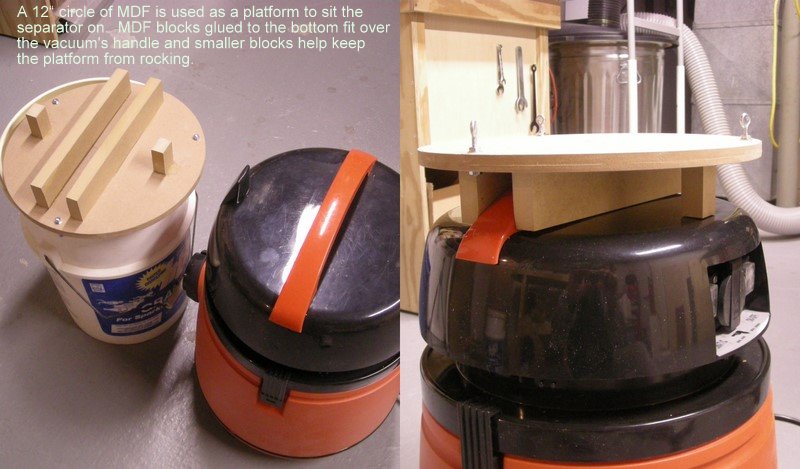It seems to me that DC blowers are better utilized with 4" hose (or greater), while shop vacs excel using 2 1/2" hose and smaller. That said, I made a bucket-sized Thien separator for use with my Fein Turbo I that I use with my ROS, OSC, routers and benchtop bandsaw. The setup does a great job at both collecting nearly all dust and chips at the source and separating the debris in the bucket so the filter in my vac never gets plugged. I will say that the collection at the bandsaw is the least effective of all the machines I use this with, but it works much better than a 4" to 2" reducer hooked to my 50-760 DC.
My build was made with a 7 gallon pool chemical bucket. I goofed up when I cut the hole in the side for the inlet, placing it much lower than I needed to. However, the oversized top compartment may contribute to the excellent separation I realize, as in over 2 years of usage I have not had to clean the filter in the vac despite the fact that the majority of use is with my ROS.

Steve
My build was made with a 7 gallon pool chemical bucket. I goofed up when I cut the hole in the side for the inlet, placing it much lower than I needed to. However, the oversized top compartment may contribute to the excellent separation I realize, as in over 2 years of usage I have not had to clean the filter in the vac despite the fact that the majority of use is with my ROS.

Steve





